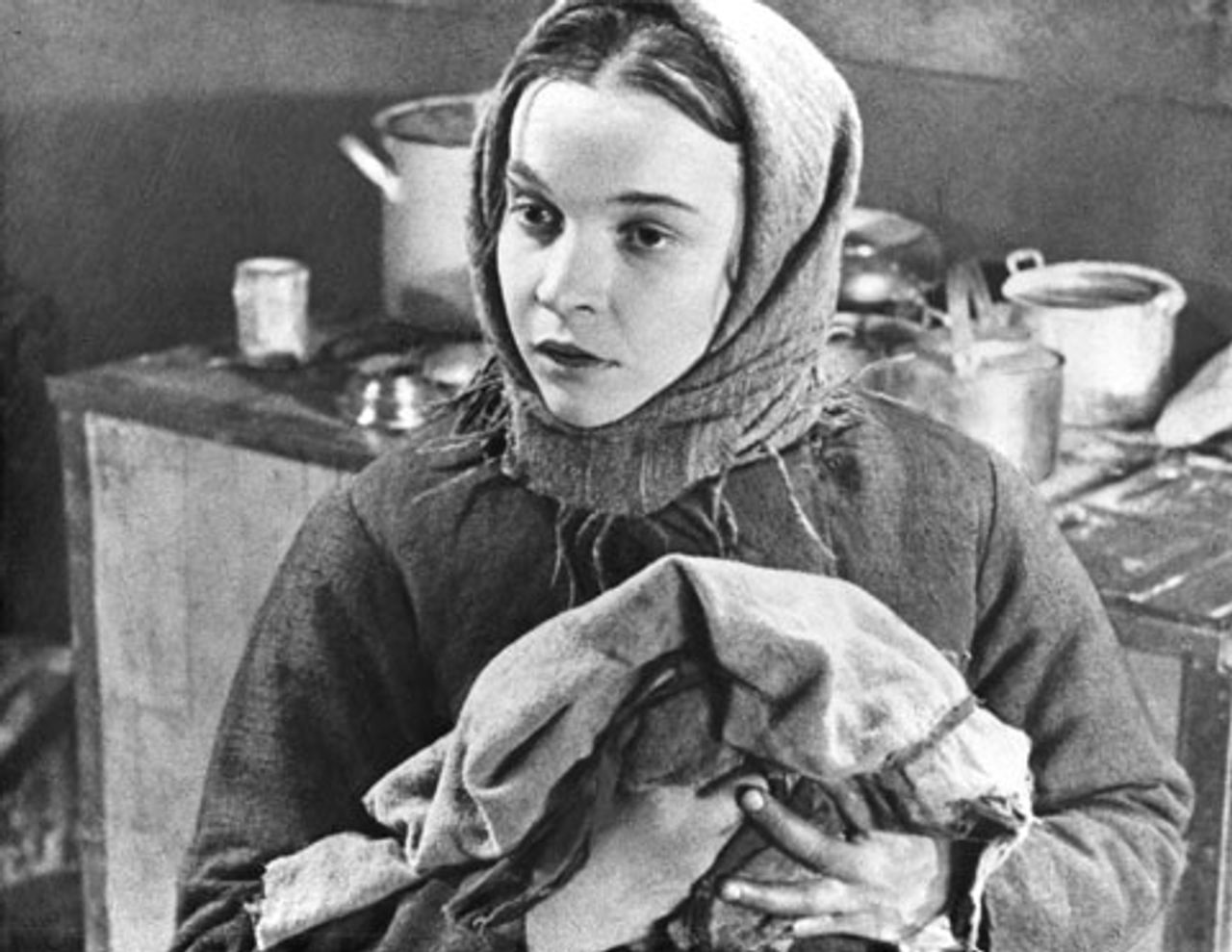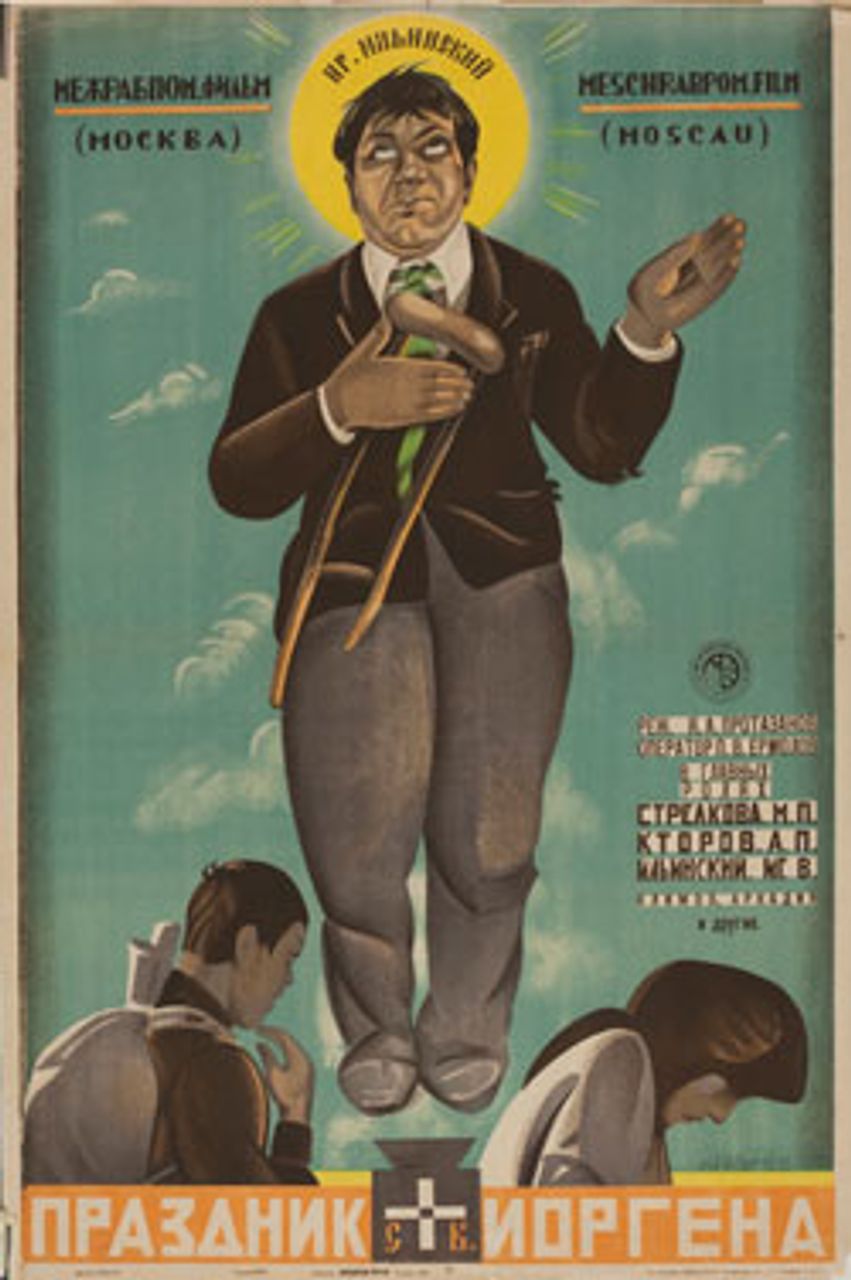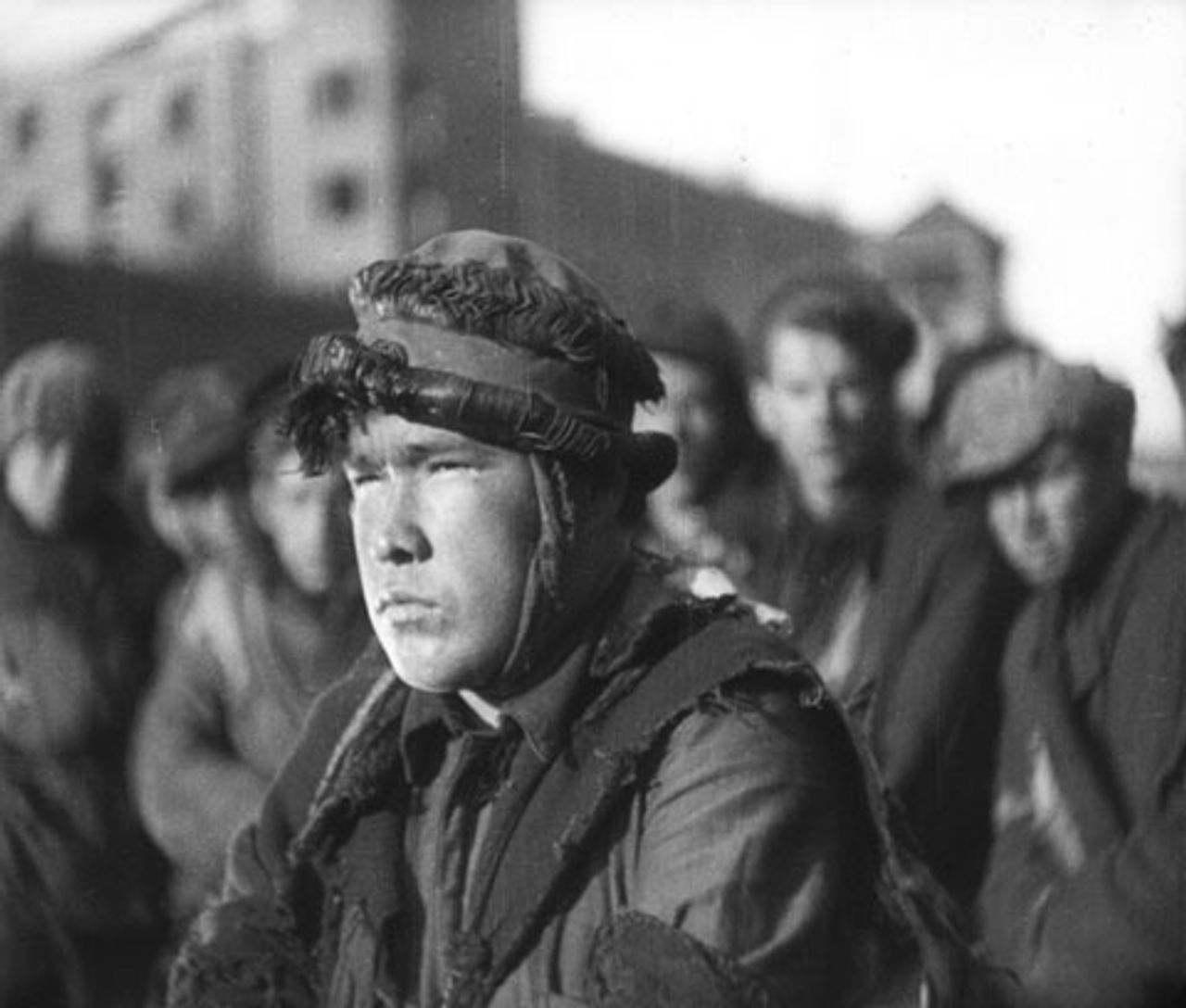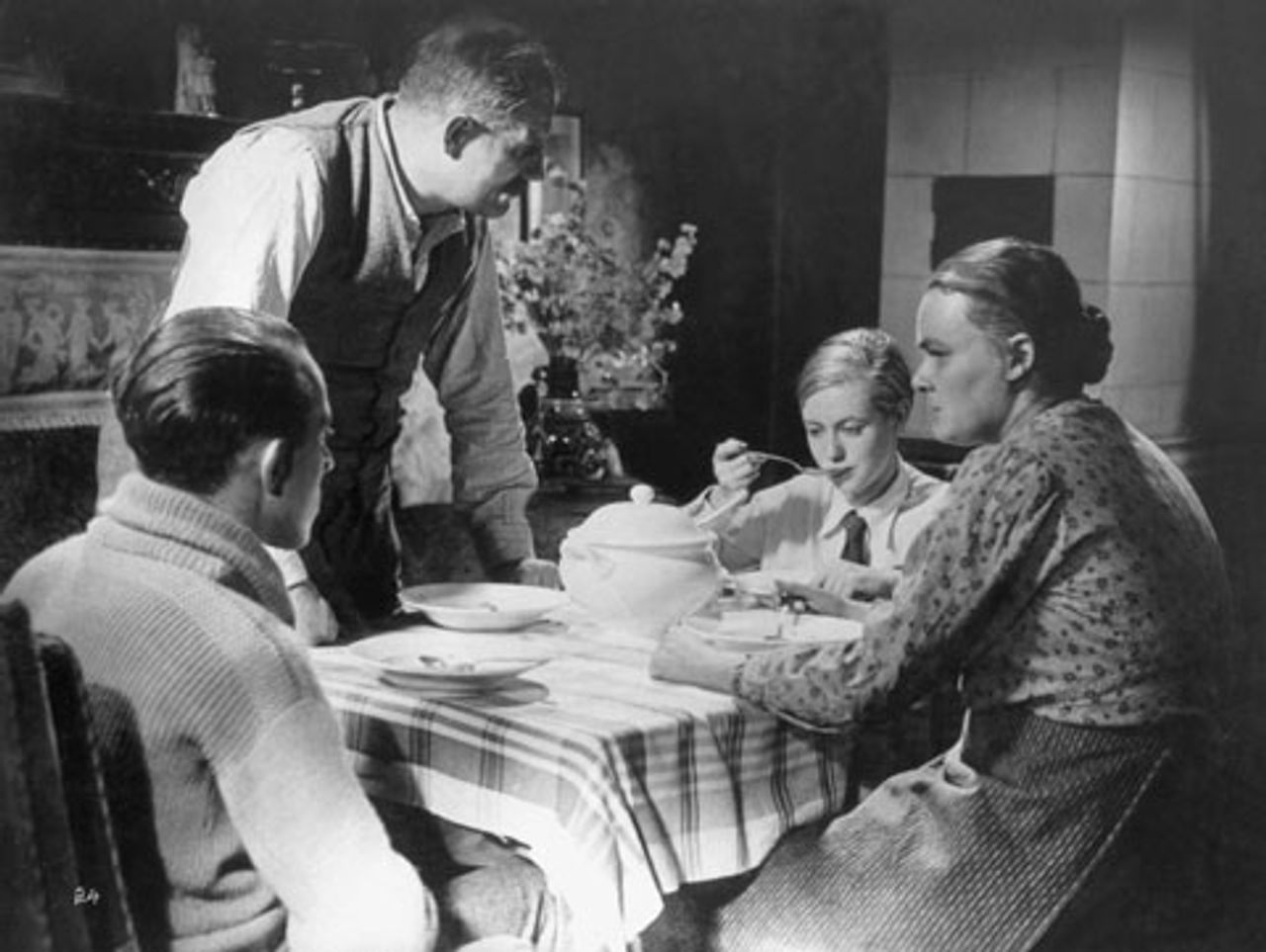This is the third of a series of articles on the recent Berlin film festival, the Berlinale, held February 9-19, 2012. Part 1 was posted February 24 and Part 2 on February 29.
A highlight of this year’s Berlin film festival was undoubtedly the Retrospective section devoted to the work of the Soviet-German film company, Mezhrabpom. Mezhrabpom produced about 600 films in the 1920s and 1930s before being closed down by Hitler in Germany and Stalin in the Soviet Union. A number of the Mezhrabpom films shown at the festival—including romantic comedies, documentaries, science fiction fantasies and political satires—were a revelation, making clear the broad palette of filmmaking that flourished in the aftermath of the 1917 Russian Revolution.
The project began when the Russian film producer, Moisei Aleinikov—who had already offered his services to Anatoly Lunacharsky, the Soviet commissar of enlightenment—met the Communist Willi Münzenberg in Berlin in 1922. Prompted by Lenin in 1921, Münzenberg had launched Workers International Relief, also known as Mezhrabpom in Russian. In the wake of civil war, foreign imperialist intervention and poor harvests, millions of people faced the imminent threat of starvation in post-revolutionary Russia. The encounter led to collaboration between Münzenberg and Aleinikov that resulted in the formation of the Mezhrabpom-Rus and later the Mezhrabpom-Film companies.
Between 1926 and 1931, Münzenberg managed the film distribution and production company Prometheus Film, a German branch of Mezhrabpom. This unique example of German-Soviet cultural collaboration has long been forgotten, and it is to the credit of “The Red Dream Factory” (the Berlin film festival retrospective’s title) that it has now revived awareness of the artistic ferment of those times.
Two reporters from the World Socialist Web Site spoke to Rainer Rother, author, artistic director of the German Cinematheque (Deutsche Kinemathek) in Berlin and organiser of the festival’s retrospective.
 Rainer Rother
Rainer RotherWSWS: Mezhrabpom produced about 600 films, Soviet and German, as well as some co-productions. The retrospective is featuring about 40 of them. Many had been forgotten for a long time. Do these new discoveries, which differ in many respects from the classic films of the revolution such as [Sergei Eisenstein’s] Battleship Potemkin [1925] cast a new light on early Soviet film art?
Rainer Rother: The amazing thing is that, in addition to the so-called “revolution films” made by the studio, a whole range of genres is represented. The studio tried to make appealing films for the public. Vladimir Shnejderov’s film The Golden Taiga [1935] is basically an expedition into the Altai Mountains. He captures many, many very beautiful landscape images and of course tells a spectacular story. This is something this studio knew how to do in order to appeal to the Russian audience in different ways.
 The House on Trubnaya
The House on TrubnayaIf you look at the comedies, you’ll notice they deal concretely with the realities of life in Russia at that time. An example is The House on Trubnaya [1928] by Boris Barnet. This movie involves a woman from the countryside being sent to Moscow. In Moscow, she enters a society consisting of all sorts of people. The film refers to issues that arose with the New Economic Policy, for example, when a hairdresser looks for someone to do his housework. Such allusions and what’s going on beneath the surface...that’s what I find especially interesting about the comedies.
Of course there are also reflections on the cinema of the time. Sergei Komarov’s A Kiss from Mary Pickford [1927] plays with the fascination the film medium had for the public, as well as Hollywood’s portrayal of idealised characters.
WSWS: What was so special about Mezhrabpom-Rus and later Mezhrabpom-Film?
RR: What really distinguishes Mezhrabpom filmmakers is that, although they operated in the context of Soviet society, they were not directly bound by official directives. It was a Russo-German company. So it had more freedom, and the Mezhrabpom people used it in very different ways. They were very keen to experiment, they built the first animation studio, they sought to fulfil propaganda commissions primarily by creating cinematic works we would now categorise as cultural and industrial films.
 St. Jorgen's Day
St. Jorgen's DayThe most international of these are the revolutionary films produced by Mezhrabpom, especially the ones directed by Vsevolod Pudovkin. But another director of significance is Yakov Protazanov, who was active before the Russian Revolution. His films include Aelita [1924] and St. Jorgen’s Day [1930]. The first film deals with a socialist revolution on Mars, the second was part of the anti-clerical campaign of the time. The church is exposed as an institution that uses its saints to do business.
On the one hand, the propaganda content of both films is carried to extremes; on the other, it is presented in such an ironic and flippant manner that the actual message slips more and more into the background. The viewer becomes much more attentive to the irony, the way characters interact with each other, and how they make it patently obvious that a message is being communicated to the public. It’s all a bit tongue-in-cheek.
The Jorgen of the title is actually a criminal on the run and is mistakenly believed to be the saint Jorgen. When he attempts to use his status as saint to negotiate with church leaders to his own advantage, the film can no longer be taken as merely anti-clerical, but assumes a very different tone. Something subversive is added, a wink of the eye. This sort of thing is very noticeable with Mezhrabpom.
WSWS: Films with an explicit political message are pretty much shunned these days. They are often regarded as tendentious and ideologically biased. The fact that early Soviet propaganda films had a very different political perspective from that of the crude Stalinist propaganda in the 1930s is often ignored. Has your research come up with anything to combat this prevailing prejudice?
RR: The “revolution films” have been particularly successful internationally, because of their interesting formal aspects, the discovery of film montage, exciting photographic techniques, the heightening of narrative interest through use of detailed imagery. All of this was very much appreciated by critics such as Siegfried Kracauer, Alfred Kerr and others in the 1920s.
Left-liberal intellectuals had no problem with the transmission of political ideas, because most of the films dealt with a situation in which the Revolution has not yet prevailed. Either the Revolution is threatened by foreign intervention, as in Storm over Asia [Vsevolod Pudovkin, 1929], or it has not even taken place, as in Battleship Potemkin, or it is about to succeed, as in The End of St. Petersburg [Pudovkin, 1927].
The pro-revolution films that were great export successes always include a confrontation with earlier times. This previous era is presented in a negative light, and this was no problem for the directors. But at a certain point in the late 1920s, these premises were no longer so applicable. Audiences now wanted to see films that were set in 1928, and not more movies relating to 1918. In this respect, the works of Boris Barnet, which were not always exported abroad, are extremely interesting.
The issue became more difficult in movies such as Protazanov’s Sein Mahnruf [His Call, 1925]. The film tries to accentuate the positive in the current situation in the Soviet Union through the figure of a Russian exile (a former White) who returns home to recover effects from his house. The film fails, however, because of the heavy-handed treatment of the subject.
To some extent, the same applies to Pudovkin’s Deserter [1933]. This tells the story of a German worker who makes his way from Hamburg to the Soviet Union but gradually comes to the conclusion he is running away. He should really be fighting for the cause in his home city, Hamburg, and not be seeking a life where the cause has already been won. This takes place in 1931-1932.
WSWS: You are talking about the period when the Stalinist bureaucracy promoted national and patriotic values in order to ideologically consolidate their power. Can you say more about the impact of this development on the art of the time?
RR: The Mezhrabpom films made in the late 1920s were heavily criticised [by the Stalinists]. There is no clearly defined political line, no consistent attitude; the approach is too playful, too liberal. This kind of criticism of the studio was already very prevalent. But due to the export successes, the company was allowed to continue producing films.
In 1928, the Prometheus Film company first showed Eisenstein’s October (Ten Days That Shook the World) in Germany. Trotsky was still referred to in this classic. It was still possible at this time. Change really came in the early 1930s. And the change was also registered in the world of cinema. This is clearly evident in a film by Boris Barnet.
In 1931, Barnet made his film The Thaw, which supported the campaign against the kulaks. It is a work of incredibly fine photography, one of the most brilliantly photographed films in our programme, but with a very simple story. Reviewing the film, Siegfried Kracauer notes: “There’s something wrong about this. Something is being narrated on a purely individual level. You can’t be against the kulaks just because a character, a kulak, behaves disgracefully and kills someone. Something is missing here compared to the films of the revolution like Battleship Potemkin and October. It soon becomes obvious that we are witnessing a way of making propaganda based merely on narrative tricks.”
 Road to Life
Road to LifeRoad to Life also dates from 1931. This was the first sound film by Nikolai Ekk, and is wonderful in a formal sense. Basically, however, you can see that the earlier freedoms of treatment have disappeared. It tells an extremely good story. It’s about young people who live on the street, actually a phenomenon of the 1920s. And they have to be integrated into society. To accomplish this, there is an ideal figure. This is a teacher who makes it possible for these young people to find their way in life.
These examples demonstrate the increasing limits that were being placed on cinematographic experimentation. There is much more linear narration, the process becomes much more formulaic, ambivalence and playful ironies disappear. The studio has to increasingly justify itself, and production was finally brought to a halt in 1936.
WSWS: The early films were produced in the face of enormous difficulties: revolution, civil war, famine. On the one hand, this was possible due to the filmmakers’ enthusiasm for the youthful medium. On the other hand, the Bolsheviks recognised the social importance of cinema and wanted to produce films even under these terribly difficult circumstances.
RR: Film was the most effective form of mass media of the time because it reached everybody. There were many millions of illiterate people, and this medium was accessible to all of them. That was its great attraction for political movements.
From Willi Münzenberg’s perspective, it was also the most suitable medium for informing the outside world about the young Soviet Union. He himself had some experience in the social use of documentaries during his work with Workers International Relief, which organised food collections to mitigate the famine in Russia. He observed at first hand how effectively such a project could be assisted by the making of films.
The significance of film in the 1920s and 1930s should on no account be underestimated. Interestingly, it was people like Münzenberg who fully recognised this and went on to involve themselves heavily in filmmaking.
WSWS: Germany and the early Soviet Union influenced each other culturally. Until now, we have assumed that the impetus came mainly from the Soviet Union. There was the great excitement in Germany about Eisenstein, the revolutionary films, etc. Have there been new findings in this respect?
RR: It also worked in reverse. In 1923, Moisei Aleinikov brought dozens of German films to Russia that were successful there. One can safely say that the documentary film division established by Mezhrabpom was very much inspired by the UFA [the famed German film company] cultural film department. They learnt a lot from Germany—e.g., how training films were made, work safety films, lots of things.
The movies playing with Hollywood influences, such as A Kiss from Mary Pickford, reveal the popularity of international stars in Russia at the time. There’s Eisenstein’s famous comment: “We love her smile, Mr. Fairbanks”. [Douglas] Fairbanks was a big star in Russia.
I was interested to see that Mezhrabpom dealt aggressively with this issue. They told themselves: “Well, that’s the way it is. So we’ll make a film about what happens when Mary Pickford comes to Moscow. Or we ourselves will try to help performers become just as popular.” They also saw themselves as an entertainment medium.
WSWS: Apparently, Berlin was an important place for learning about US films and Hollywood. In an interview, you once mentioned the heavy censorship operating in Germany. But there’s still this stereotyped image of a Weimar Republic with vaudeville and cabaret, where everything is allowed.
RR: Not everything was allowed. For example, there were issues with films that had a really strong aesthetic effect and also a particular viewpoint, such as Battleship Potemkin. Conflicts about censorship arose in the Weimar Republic over and over again. Alfred Kerr strongly defended Battleship Potemkin, which was due to be banned. The film eventually reached cinemas in a slightly abridged form.
 Kuhle Wampe or Who Owns the World?
Kuhle Wampe or Who Owns the World?Censorship also affected other films, such as Kuhle Wampe or Who Owns the World? [Slatan Dudow, 1932, co-scripted by Bertolt Brecht and with music by Hanns Eisler]. There were repeated demands from the right-wing press: this film belongs in the hands of the chief of police.
WSWS: In comparison, what was the attitude of the state towards Mezhrabpom in the Soviet Union?
RR: There were no significant cases of censorship concerning Mezhrabpom because this studio had, to a certain extent, been granted more freedom. That has to be acknowledged. But they were also very clever at Mezhrabpom. As long as it was a Russo-German company and relatively successful in the Soviet Union, there was no real censorship. That changed with the Nazis’ rise to power, because the German branch was liquidated. And from 1933, the situation tightened in Moscow, too.
Material was chosen in such a way as to avoid any cause for censorship. There were many things that were proposed, but never fully carried out. But so far, I haven’t heard of any censorship of finished films. Of course, we know the fate of Revolt of the Fishermen [Erwin Piscator, 1934]. Stalin didn’t like the film at all; he thought it was terrible. You can see that from the surviving version of the film. It has certainly been cut. Otherwise it wouldn’t have been released at all.
WSWS: What happened to German artists fleeing Hitler, who went on to work with Mezhrabpom in the Soviet Union?
RR: Gustav von Wangenheim made The Struggle [Der Kampf, 1936], and, as mentioned, Piscator directed Revolt of the Fishermen. Always on the lookout for authors, Mezhrabpom approached Friedrich Wolf and others.
But I get the impression the Germans were more and more uneasy about the situation in Russia. They felt that they were being closely watched, and that it wasn’t easy to make a film under such conditions. This close surveillance of people in the years before Stalin’s Great Terror left its mark on them, making them cautious and distrustful. You notice this in The Struggle, which we didn’t include in our selection. It’s a film that is so obviously politically correct. It is so concerned to avoid saying anything wrong that it has to make everything blindingly clear. Completely implausible.
WSWS: After the Revolution, there was this enormous explosion of art in all possible directions. What constituted the freshness and timeliness of this art?
RR: These films are a pledge that things can be different, that the situation changes completely with a revolution. This is certainly the major impetus behind all the enthusiasm these movies evoked in the liberal and left intellectual circles in Berlin. Walter Benjamin speaks in his Potemkin review of “the dynamite explosion of the split-second, in which our world really becomes perceptible for the first time”. The early and mid-1920s was when you could actually experience that kind of utopian moment, and the expectation that it would continue.
And from 1928-1929, the disappointment is all the more crushing when people realise that this moment is not continuing, and history is merely repeating itself.
